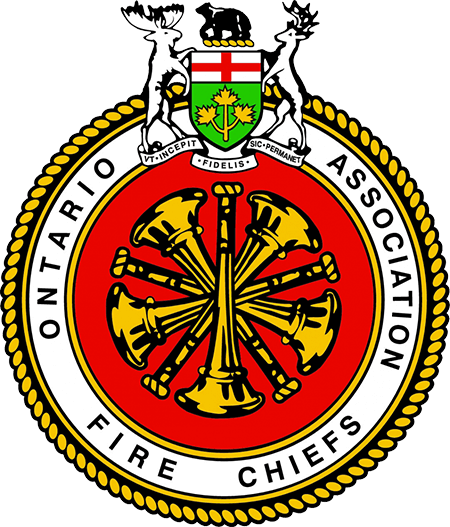A community risk assessment regarding fire protection identified the need for increased public education, inspection and code enforcement in Elliot Lake.
Council was given the results of the assessment at the Oct. 10 meeting by Art Booth of ABKM Consulting.
Booth said all municipalities and fire departments without municipal organization are required, by legislation, to have a community risk assessment in place by August 2024.
“It allows an examination of the risks in your community and use the information on those risks and some of the potential solutions for them to take a look at and allow that to inform the decisions for fire protection.”
The assessment must be reviewed annually and a new one completed every five years.
The report consists of nine categories when assessing risks to public safety including geographic, building stock, critical infrastructure, demographic, hazard, public safety response, community services, economic, and pass loss and event history.
With regards to geography, Elliot Lake’s distance from neighbouring communities places the city in a position of providing for itself. The surrounding forest presents an additional risk to the city and its residents.
With regards to building stock, the closeness of adjacent properties is an issue as well as the many properties that are outside the effective emergency response distances located on roadways less than ideal for heavy response vehicles.
Critical infrastructure to the community includes the water treatment facilities, water tower, wastewater treatment facilities and communication towers.
With regards to demographics, more than 50% of the population is age 60 or older. Limited mobility, hearing issues, diminished sight and disabilities may limit a person’s ability to self-evacuate in the case of an emergency.
Hazards faced by the community can be natural such as weather events, caused by humans in the case of hazardous material spills or technological hazards.
In addition to the fire department, the public safety response includes the OPP, Algoma Paramedic Services and the Ministry of Natural Resources.
With regards to other community support, the Elliot Lake Fire Service has not engaged with service clubs to explore assistance with public safety. The city has an agreement with the Red Cross, which supports victims displaced by fire, but recent requests for assistance have not been successful.
The report indicated that “emergency responders are now seeing an increase of calls to 911 associated with social/economic or mental health related issues. The call may not be a fire emergency, but the fire service is called as part of the emergency network available in Elliot Lake.”
In the case of past event and loss history in the city, approximately 12.5% of annual emergency calls are to fires while 87.5% are for non-fire calls including rescue and medical responses.
“The best way to deal with the risks is to find some potential solutions that the fire service, the community and its partners and neighbors and residents can be able to achieve,” said Booth.
As for Elliot Lake, he said the fire department and staff and their resources have been providing service to the community since inception and “they’ve been doing very successful.”
He noted that while the incidence of fire emergencies is going down in North America, Elliot Lake is experiencing an increase.
Booth said there are vulnerable persons in the community that the fire service’s existing public education and our fire prevention activities may not be reaching, so social services should be engaged to develop effective public education for marginalized community members.
He said there are a significant number of alarms that the fire service responds to that are false alarms.
“Arguably, there’s no such thing as a false alarm until the fire department arrives so all of the associated costs with the dispatching and arriving and all of those items… tends to become expensive.”
Another recommendation is to charge a fee to people for false alarms that may be due to lack of maintenance of their building alarm.
“There’s no reason for the fire service today to be responding to improperly maintained alarms that owners have – that’s the owner’s responsibility.”
He praised the fire department for how every staff member is involved in both fire prevention and public education. “However, the programs may not be targeted into the right direction.”
The fire service does have a schedule to inspect different neighbourhoods each year but Booth said the department should be flexible to add a neighbourhood to the roster where fires may be occurring in that particular year.
In the case of fire prevention, Booth said it would be helpful if the department had software that could capture, store and analyze data to make informed decisions.
Another recommendation is to train other firefighters to determine the cause of the fire as this is currently the sole responsibility of the fire chief.
Director of emergency services, John Thomas said, in addition to fires, the fire department could respond to a variety of calls including a medical emergency or car accident and provide help until the ambulance arrives.
Thomas said home inspections for fire prevention also include the cottages but it takes longer because the homes are so much farther apart.
With regards to the rise in the number of recent fires, Thomas said the issue could be due to the older buildings from the 1960s when there was no building code.
“Another problem is we have, you know, the people that we seem to be dealing with are people with addictions and mental health,” said the fire chief, who has been with the fire department for 29 years.
“I know fire and I know our community but when you start getting into mental health, it’s a whole different ball game… it’s very, very difficult to have these people to receive the message (about fire safety)… and that is the core of the people that we’re having these fires with.”
As for the senior population, Thomas said they are the safest at ensuring their smoke alarms are in working order.
